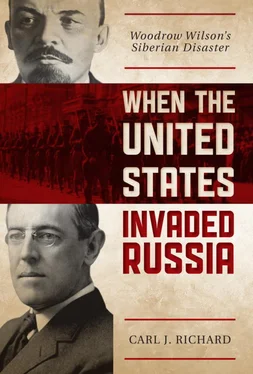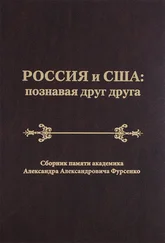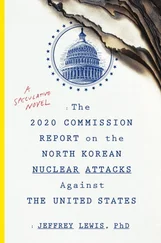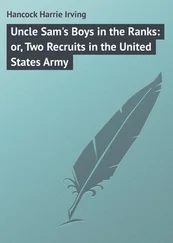The experts were wrong, of course. But the success of the German generals in overruling the civilian authorities in this crucial decision was indicative of the power they had come to wield. [20] Liddell Hart, War in Outline , 177–78; Hughes, Contemporary Europe , 69; Erich Ludendorff, My War Memories (London: Hutchinson, 1919), vol. 1, 315; Keegan, First World War , 351–52.
The second cause of the United States’ declaration of war against Germany was the Zimmerman telegram, which had been intercepted by both the British and the U.S. State Department. In this telegram the German foreign minister instructed the German minister to Mexico to offer the Mexican government the restoration of Texas, New Mexico, and Arizona in exchange for help against the United States should war erupt between the nations. When Congress hesitated to give Wilson the authority to do whatever was necessary to protect American shipping, Wilson released the telegram. Shortly thereafter, the Germans sank three American ships, leading to a congressional declaration of war. [21] Edward M. Coffman, The War to End All Wars: The American Military Experience in World War I (Oxford: Oxford University Press, 1968), 7–8; Keegan, First World War , 351–52.
The United States gave the Allies immediate financial and naval aid. When the United States entered the war, the Allies were on the verge of economic collapse. Great Britain was spending seven million pounds per day, part of which was expended in the form of loans to the other Allies. Against the objections of many Americans, the U.S. Treasury began advancing $500,000 per month to the Allies. The United States, which had spent the first few years of the war protesting vehemently against both sides’ encroachments on the rights of neutrals at sea, began to enforce the blockade of Germany with a ruthlessness that put the British to shame. As Assistant Secretary of State Frank L. Polk told British Foreign Secretary Arthur Balfour, only half in jest: “It took Great Britain three years to reach a point where it was prepared to violate all the laws of blockade. You will find that it will take us only two months to become as great criminals as you are.” Also, the light craft and listening devices of the U.S. Navy were particularly helpful to the British against German submarines, which sank 860,334 tons of British shipping in April 1917 alone, before convoys, mine barriers, destroyers, patrol boats, and aircraft succeeded in largely neutralizing them. [22] Liddell Hart, War in Outline , 179–80; Keegan, First World War , 353–54; Coffman, War to End All Wars , 96–101, 197.
But although the Allies were delighted to receive American financial and naval aid, what they really believed they needed most were more soldiers facing the Central Powers. It was obvious to everyone that it would be at least a year before a sizable American army could be organized, trained, and transported to France. Thus, the Allies had to turn elsewhere for the kind of help for which they were most desperate. [23] Liddell Hart, War in Outline , 178–79; Hughes, Contemporary Europe , 69; Coffman, War to End All Wars , 18–19, 187–88.
The second logical place to look for aid—or, rather, more aid—was Russia. The Allies hoped that heavy Russian pressure on the Central Powers in the East would save them in the West. But the Russians had been faring even worse than the British and French. In 1914 the Russians had invaded eastern Prussia, only to have 92,000 of their 200,000 soldiers captured, and another 50,000 killed or wounded, at the Battle of Tannenberg. This defeat was caused by infighting between the Russian generals and by their practice of exchanging uncoded radio messages that signaled to the enemy their movements and intentions. In 1915 the Germans and Austrians captured over a million Russian soldiers in two separate campaigns in the Carpathian Mountains and Galicia in Poland. In 1916 the Russians’ ill-organized campaign in Galicia cost them another 100,000 soldiers. [24] Liddell Hart, War in Outline , 56–58, 102–4, 139–41; Keegan, First World War , 147–49, 306; Hughes, Contemporary Europe , 51–52; Norman Stone, The Eastern Front, 1914–1917 (New York: Charles Scribner’s Sons, 1975), 51, 58, 63–66, 165, 231.
Incompetent Russian generals concocted a legend to justify these stupendous defeats, suffered by armies that outnumbered their German and Austrian enemies, a legend that Lloyd George later repeated most vividly in his memoirs. According to this tall tale, the Russian army had virtually no rifles, much less heavy artillery or machine guns. Only one out of every four Russian soldiers received a rifle, and he was not given much ammunition with it. Very often, it was difficult to retrieve these rifles from the grasp of the dead, killed in large numbers by German artillery and machine guns, so that the supply soon dwindled even further. The Russians possessed few artillery guns with which to answer this murderous fire, and they were always quickly silenced by German barrages aimed at them or by lack of ammunition. Under such conditions the Russian soldiers could only remain at their posts, holding the picks and shovels with which they fought and waiting to be “killed like partridges,” retreat, or surrender. [25] David Lloyd George, War Memoirs of David Lloyd George (Boston: Little, Brown, 1935–1937), vol. 1, 383–94.
This legend makes for compelling reading, but there is virtually no truth to it. The Russians did experience a shell shortage in 1915 as the result of the czarist government’s failure to plan for a long war and of its officials’ excessive reliance on foreign suppliers, a shortage that Russian generals learned to exaggerate and employ as justification for all of their debacles. But there was no shell shortage in 1914, and even in 1915 the Germans’ artillery advantage in the East was less than the Allies’ superiority in the West, an advantage that did the Allies no good there. Furthermore, by 1916, Russia was producing 4.5 million shells per month as opposed to Germany’s 7 million, which was divided between the Western, Italian, and Eastern fronts, so that it was the Russians who actually possessed the material advantage on the Eastern Front in 1916 and 1917. Indeed, when the Russians ended their involvement in the war, they possessed a reserve of 18 million shells. Between 1914 and 1917, there was a 2,000 percent increase in Russian production of shells, a 1,000 percent increase in production of artillery guns, and a 1,000 percent increase in production of rifles. By February 1916 nearly all of the two million Russian soldiers possessed a rifle. The legend of unarmed Russian peasants charging German machine guns is largely fictitious. Large numbers of Russians were captured not because they lacked weapons but for the same reason that many Austrians were captured by the Russians: the scarcity of roads and railroads on the Eastern Front meant that whenever there was a breakthrough, reinforcements could not arrive soon enough to save defenders and defenders could not retreat fast enough to avoid encirclement. The poor infrastructure of the Eastern Front, coupled with its vast size, meant that trench warfare and the immense advantages it conferred on the defensive side in the West did not prevail in the East. [26] Stone, Eastern Front , 12–13, 49, 133, 147, 151–52, 163, 210–12, 226, 254.
The Russians suffered military disasters in World War I not because of material shortages but because of incompetence, poor organization, and disunity. Most Russian campaigns were poorly planned. The deep division between aristocratic officers on the one hand and middle-class officers and poor enlisted men on the other was compounded by the absence of a clear chain of command. Russian forces were often virtually independent of one another and sometimes refused to share resources or cooperate in other ways. Too much of Russia’s limited railway space was devoted to cavalry, a preserve of the aristocracy that the prodigious firepower of the modern rifle and the machine gun had rendered virtually worthless. The aristocrats who dominated the artillery department insisted that vast sums of money be spent on outdated fortresses that were destroyed or captured by the Germans in a short time and on fortress artillery that could not be used in the field. Far from working closely together as in nearly all other contemporary armies, cooperation essential to success, Russian infantrymen and artillerymen were often at odds. Aristocratic artillerymen had so much contempt for the poorly trained infantrymen, who were generally of the peasant class, that they sometimes declined to “waste” shells in their support. In one particularly appalling instance, artillerymen failed to bombard the enemy prior to an infantry assault, so that large numbers of soldiers were mowed down by German machine guns; when survivors clinging to shell holes hoisted the white flag of surrender, the artillerymen then fired on their own infantrymen in anger. The Russian railway system was primitive and possessed too few skilled railway men. Finally, officers’ cruel beatings of their enlisted men discouraged loyalty. [27] Ibid., 12–13, 25, 28, 32, 35–36, 49–50, 66, 94, 131, 134, 157, 168–69, 171, 229.
Читать дальше












